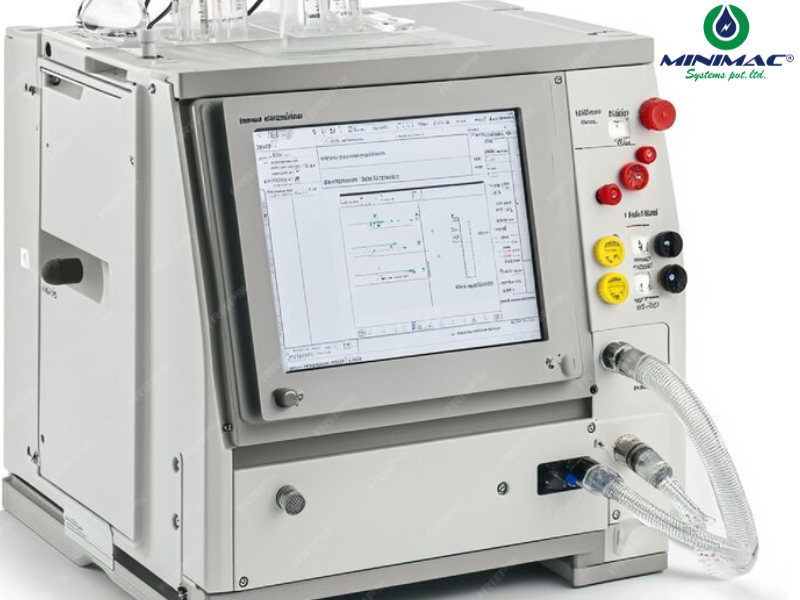Unveiling the Power: Exploring the Importance of Transformer Oil Testing
Introduction:
A transformer provides an efficient delivery of electricity, which is one of the most critical components . In order to obtain the best performance out of them over a longer service life, regular checking of this test equipment would be done. Oil testing is an important aspect of transformer maintenance. This article explores the importance of oil testing in transformers and how it is beneficial.

Importance of Oil Testing in a Transformer
It is a kind of diagnostic test to know the status of the insulating oil that is in transformers. Through the analysis of properties and composition of the oil, experts can also identify if the oil is contaminated, oxidized, or degraded. This allows for the early identification of issues so that you can have preventive maintenance or repairs as needed.
On this first point, an oil test provides several key benefits:
In summary, oil testing is an essential practice for ensuring that transformers operate correctly and for the maximum amount of time. Using oil analysis allows companies to get ahead of problems, improve performance, and minimize money spent later down the line.
Why is Oil Testing Important for Transformers
Transformers are an essential part of modern electric power systems and are involved in electricity transmission and distribution. Insulating oil covers these essential components to ensure performance and life. For electrical insulation as well as heat dissipation of the transformer, normally, an insulating oil is used. The oil can become dirty, oxidized, or inefficient, and this causes issues that can cause the transformer to not work, or worse, to break down catastrophically.
An oil test gives a complete picture of the condition of the oil and helps to detect the problem at a very early stage. Industry experts can diagnose any abnormalities or changes in the physical, chemical, or electrical properties of the oil, which may indicate some problems in the transformer. In line with this, this timely information allows for predictive maintenance, repairs, or even replacements, which can assist in improving the reliability of the transformer and prolonging its lifespan.
In addition, Oil testing forms an important part of a comprehensive transformer health monitoring and maintenance programme. Periodic evaluation of the condition of the oil & the dissolved gases helps assess the health of the transformer, so that the operators can take an informed decision about the operating status of the transformer & possible maintenance interventions. This reduces the chances of unexpected failures, thereby ensuring that the power continues to flow to end-users as expected.
Types of Test Conducted in Oil Testing
The different Analytical procedures to check the condition and property of the Insulating oil in the Transformer Apply for oil testing. The important areas of these tests are described as;
- Physical Tests: This is concerned with the physical nature of the oil, including colour, appearance, viscosity, and dielectric strength. Parameters that can show if the oil is contaminated, oxidised, or degraded.
- Chemical Testing: This examination gives details about whether the oil has impurities or degradation products, and the like. Dissolved gas analysis (DGA), acid number, or water content are tests to identify overheating, partial discharges, or moisture.
- Dielectric Properties: Measure the breakdown voltage, power factor, and resistivity of the oil. These tests help in testing the value of oil to withstand electrical stress and give signals of indications of insulation breakdown.
Understanding BDV Testing
The Dielectric Breakdown Voltage (BDV) Test is one of the most important electrical tests that can be performed on oil. The BDV test is designed to show the electrical breakdown voltage of an oil when an electric current passes through the oil. I appreciate that this test determines the oil's capability to resist electrical stress and finds out the contaminations, if any, such as water, dirt, or particles , which can impair the insulating properties of the oil.

The BDV test is carried out using a setup that subjects a ramp-up voltage to the oil sample until the breakdown happens. Low BDV indicates contaminated or degraded insulation. Testing BDV values periodically ensures that the oil retains its dielectric strength, enabling the transformer to work safely under different electrical load conditions.
A high BDV value enables transformers to perform reliably and efficiently with less risk of insulation breakdown and unexpected shutdown. BDV testing provides a clear indication of the oil condition and therefore allows rational maintenance planning as part of a holistic oil testing program.
For More Information, Visit our YouTube Channel - Click Here.
Benefits of Regular Oil Testing
The well-known advantages of oil testing help transformer owners & operators to consider this part of a well-thought-out asset management regime:
- Early Detection of Problems: With regular monitoring, the likelihood of early detection of possible contamination, oxidation, degradation, and provision of preventative maintenance or remedial action becomes higher.
- Maintenance Strategies Optimization: The figures provided by the different oil testings performed can be used to optimize the maintenance strategies of the transformer , allowing most efficient usage of resources and the transformer operating at its best.
- Enhanced Reliability and Longevity: Rectifying the problems identified from an analysis of the oils helps to prolong their longevity and ensure maximum reliability from them, thereby eliminating the need for expensive replacements.
- Cost Savings: Regular oil testing can save a lot of money upfront by preventing problems from getting worse, saving you from the costs of emergency repairs, unplanned downtime, and the need to replace your equipment earlier than expected.
Common Issues Detected Through Oil Testing
Transformer oil testing is also widely used for identifying various types of problems in transformers that can have a serious impact on the performance and lifetime. Oil analysis can detect some of the following problems:
- Contamination: External substances like soil, moisture, or even metallic particles can reduce the insulating characteristics of the oil, which increases electrical stress.
- Oxidation: Insulating oil can oxidize over time, which can create sludge, varnish, and other by-products that can deplete its cooling and insulating properties.
- Thermal Decomposition: High temperatures can also cause the oil to decompose, resulting in gas dissolution or other degradation products that reflect overheating or insulation failure
- Partial Discharges: Any kind of localised electrical discharge can be detected through oil testing, which is a sign of insulation problems or the need for maintenance.
Frequency of Oil Testing
How often oil is tested will depend on the transformer size, its age, and its operating conditions. For small transformers, it is performed on a yearly basis or once every second year. For larger critical transformers, semi-annual or even quarterly testing is generally recommended.
Other considerations, including the operating environment, load conditions , and any abnormalities, can also dictate how often testing is performed. Transformers in an aggressive environment or a highly stressed application may be subjected to an additional schedule of testing for reliability of performance.
Oil Testing Methods and Equipment
Some of the analytical methods & test instruments used for oil testing of transformers are:
- Dissolved Gas Analysis: Dissolved gas concentrations measured in the oil, related to overheating, partial discharges, or arcing problems
- Dielectric Breakdown Voltage Testing: Evaluates the oil's ability to withstand electrical stress, which is a basic indicator of insulating ability.
- IFT measurement: Determines the stability of the oil at the water interface, with any variations indicating contamination or the formation of oxidation products.
- Fourier Transform Infrared (FTIR) Spectroscopy: Determine the chemical composition of transformer oil, additives, contaminants , and degradation by-products.
How to Interpret Oil Testing Results
The interpretation of oil testing results is of great importance as it provides information on the condition of the transformer and the necessary actions. Those who have experience will assess diverse parameters, benchmarking them with industry standards and historical data to discover anomalies or trends that may signal a problem.
Much higher concentrations of the commonly dissolved gases (e.g., hydrogen or acetylene) could indicate partial discharges or overheating. A reduced dielectric breakdown voltage or higher values of acid number can also indicate that the need for oil is filtration or replacement.
With a combination of interpreting oil testing data, professionals make sound decisions on maintenance, repairs , or replacement when required to provide reliable transformer operation.
Importance of Professional Oil Testing Services
Importance of Hiring Professionals Who Carry out Oil Testing Appropriate service providers validate the results using oil testing and set up maintenance plans dependent on the results.
- Calibrated equipment: Use of calibrated equipment and pre-calibrated methods prevents variations in oil testing results.
- Data analysis and interpretation: Carrying out a comprehensive analysis and interpretation of data, analysis of the problem, and issuing a corrective action response
- ASTM(I) Compliance: Compliance with ASTM (American Society for Testing and Materials) can support quality testing procedures and reporting.
- Condition-Based Maintenance: Condition-based maintenance is based on the condition of transformers.
Conclusion
Oil testing for transformers is of paramount importance in the field of electrical power systems. Transformers, the backbone of the modern power grid, play a major role in providing reliable electricity. DT is a significant non-destructive technique to identify the quality of insulating oils in transformers, as the test yields information that may help in early detection of faults as well, and preventive actions can be taken in time, leading to the safety of the transformer.
Oil testing on a routine basis enhances reliability, increases longevity, and leads to cost savings. By following this critical step, businesses can leverage their transformers to become reliable, productive, and prepared for the changing energy demand of tomorrow.
Learn more about our services and industry insights by visiting our official Website: Minimac Systems





